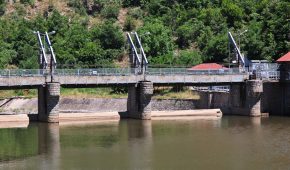2022-05-26 The quality of operation of the entire installation depends on whether the pipes are properly connected. If the connection is made carelessly or with the use of a wrong technique, the connection point may become the weak link of the entire system. This is why it is worth learning about the methods of connecting pipes depending on the material they are made of.
Connecting steel pipes
The most common method of joining steel pipes is threading. This technique is mainly applicable to smaller-diameter components. In the threading process, suitable tools are used: grooving machines, tapping machines, and electric and manual threaders. As a result of their action, the ends of the pipes are shaped so that it is possible to tighten the screws.
For larger-diameter steel pipes, threading is not possible. Such pipes are most often connected by welding techniques. This is possible for components made of specific types of metal. Welding works well for stainless steel and copper pipes, but it is often used in the case of cast iron pipes due to the high brittleness of this material. Whether this method of joining the pipes will be effective depends primarily on the chosen method of welding: gas, TIG, MIG, MAG or MMA. It is also worth remembering that welding can only be carried out by qualified specialists with appropriate qualifications.
Pipe flanges – an alternative way of joining steel pipes
Pipe flangesare a solution that will work for larger steel pipes that, for various reasons, cannot be welded together. Such flanges are made of metal: stainless steel, carbon steel, alloy, as well as cast iron and polypropylene. The type of steel should be adapted to the specifics of the installation, e.g. what substances will be transported with it, at what temperature and at what pressure.
A pipe flange is a way of connecting steel pipes that ensures tightness in all conditions. The flanges are resistant to corrosion, mechanical damage and deformation, thanks to which they retain their properties for many years. This solution is also worth using because of the easy disassembly – in the event of damage to the pipe and the need for repair or replacement, the flanges can be easily removed to gain access to the appropriate fragment. This solution is also worth considering for its easy disassembly – in the event of damage to the pipe and the need for repair or replacement, the flanges can easily be removed to access the appropriate fragment.
The main application of pipe flanges is to connect two identical steel pipes. However, they can also be used to make other connections, e.g. a steel pipe with a valve or tee.
Connecting copper pipes
Copper pipes are widely used in various types of installations: hot and cold water, central heating, gas, and cooling. Copper pipes are widely used in various types of installations: hot and cold water, central heating, gas, and cooling. In each of these cases, the key is the perfect tightness of the installation – connections between copper pipes must be made in such a way that even a minimal amount of gas, water or refrigerant does not leak outside. They are also used in industry. In each of these cases, the perfect tightness of the installation is crucial – the connections between copper pipes must be made so that not even minimal amounts of gas, water or refrigerant escape to the outside.
The most effective way to connect copper pipes is soldering. Specialists use two popular methods:
- soft soldering, performed at a lower temperature (about 450°C) – this technique is suitable for low-temperature central heating installations, cold and hot water installations;
- brazing, which is carried out at higher temperatures (from 590 to 850°C), suitable for gas, oil, central heating, and compressed air installations; this method requires the use of bronze and copper fittings.
Copper pipes joined by capillary soldering are slightly less common. In this case, heated solder is used for joining, which fills the gap between the pipe and the fitting to the desired depth.
Connecting pipes depending on their type
Various types of pipes used in many types of installations offer many possibilities for the methods of joining them. Depending on the material, an effective way to connect such pipes can be:
- pressure welding,
- torsion,
- clamping or pressing,
- gluing.
Pipe welding works best for components made of polyethylene, polybutylene or polypropylene, used to transport water, and sewage, as well as in industry. In this process, a special welding machine is used, which melts the material at the ends of both pipes. After solidification, both fragments are connected permanently.
Torsion is possible for pipes with appropriate ends. The pipes are then not permanently connected and can be easily disconnected if necessary.
What to pay attention to when choosing the method of connecting pipes?
When choosing the method of connecting pipes with each other, it is important to pay attention not only to the material from which they are made but also to their size. Some techniques may not apply to large-diameter pipes used in industrial installations. One example is threading, which works only for small components. If two large pipes are to be connected, steel flanges will work better.




